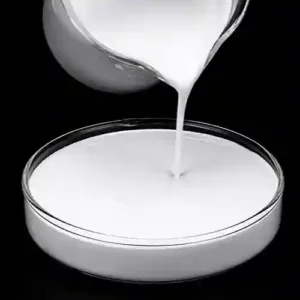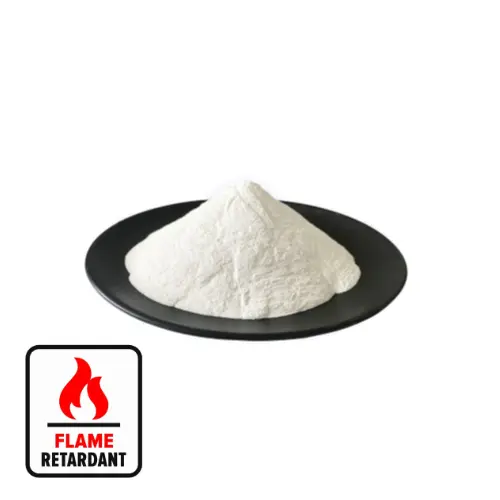Hebei Messi Biology Co., Ltd. stated that in addition to producing slurry magnesium hydroxide, its application in the field of environmental protection is also an important aspect of magnesium hydroxide powder.
In the process of producing powdered magnesium hydroxide, how to speed up the sedimentation and filtration speed of alkali-precipitated magnesium hydroxide is a key issue. Although there are some basic technologies for accelerating the sedimentation and filtration speed of magnesium hydroxide (such as crystal addition method, coagulant (including filter aids, etc.), hydrothermal method, and control of pH conditions during precipitation), how to effectively use it These technologies are well researched, and the application of these technologies is also related to which precipitant is used when precipitating magnesium hydroxide. The following focuses on this aspect.
(1) In the process of producing magnesium hydroxide by alkali method, when the magnesium hydroxide is precipitated by medium or strong alkali such as milk of lime or sodium hydroxide, it will be a gel, which is difficult to filter. Auxiliary measures must be taken to solve this problem. At present, most methods are to add a coagulant to a solution containing magnesium ions or add prepared magnesium hydroxide and magnesium oxide as seed crystals, which can greatly speed up the sedimentation and filtration of magnesium hydroxide. In addition, when using milk of lime to precipitate magnesium ions, controlling the pH of the solution during precipitation can also improve the precipitation performance of magnesium hydroxide, increase its crystallinity, and help speed up sedimentation and filtration.
In order to improve the crystallization conditions of magnesium hydroxide and prepare crystalline magnesium hydroxide of various shapes, the hydrothermal method is currently used, that is, precipitation is carried out in a certain concentration of magnesium salt solution and sodium hydroxide solution (to form colloidal magnesium hydroxide). ), aging it at a higher temperature and a certain pressure in an autoclave or reaction kettle, or directly reacting in an autoclave or reaction kettle, which can not only solve the above problems, but also improve the preparation functionality and Ultrafine particles of magnesium hydroxide are very advantageous.
(2) When using ammonia or ammonia water to precipitate magnesium hydroxide, the situation is different from when using milk of lime and sodium hydroxide. In general, the crystallization performance of magnesium hydroxide is much better than that of milk of lime and sodium hydroxide, such as It can better control conditions such as brine and ammonia (or ammonia) concentration, flow rate, stirring speed, pH value and temperature during precipitation. Its settling and filtration speed are significantly better than the milk of lime and sodium hydroxide methods. Since ammonium hydroxide is a weak base, the pH value after the reaction is generally about 10. The pH of the solution has a buffering effect, unlike the pH value after the strong alkali reaction, which is higher than the pH value of the ammonia method. The production of magnesium hydroxide using the ammonia method can be carried out in a reactor, which is beneficial to environmental safety. The mother liquor after the reaction can also be used to recover ammonia, and the ammonia can be reused, which is beneficial to reducing production costs.
(3) Judging from the adsorption performance of magnesium hydroxide, under normal conditions, magnesium hydroxide produced by precipitation of milk of lime and sodium hydroxide is mainly an amorphous colloid, while magnesium hydroxide produced by the ammonia method The crystallinity is higher than the former, and its adsorption performance and ability to adsorb impurities are higher than the latter. Controlling the conditions, the latter is more likely to generate various crystal forms of magnesium hydroxide.
(4) Someone has tried a mixed method that combines the ammonia method and the lime milk method. Since the use of ammonia as a precipitant consumes a large amount at high pH, use a small amount of lime milk (or lime water) to adjust the pH to 11 or greater. This can make full use of ammonia and regulate high pH. The role of value is conducive to reducing costs. This technology and process are different from the process of recovering ammonia from the mother liquor after ammonia precipitation of magnesium hydroxide. The disadvantage is that the calcium ions in the solution are increased and the magnesium hydroxide is passivated, which increases the complexity in terms of process. This method has not yet been used in production.
Application of magnesium hydroxide in environmental protection field
Magnesium hydroxide is a strong base and is widely used in the field of environmental protection. It plays an important role in absorbing toxic gases, preventing atmospheric pollution, and protecting the environment from pollution. First of all, magnesium hydroxide has a strong adsorption capacity and can effectively remove harmful substances in exhaust gas; secondly, magnesium hydroxide can also inhibit the growth and reproduction of microorganisms, thereby reducing environmental pollution. In addition, magnesium hydroxide can also be used to prepare a variety of other chemical products, such as cleaners, disinfectants, etc. In short, magnesium hydroxide, as a material with broad application prospects, plays an increasingly important role in environmental protection.




